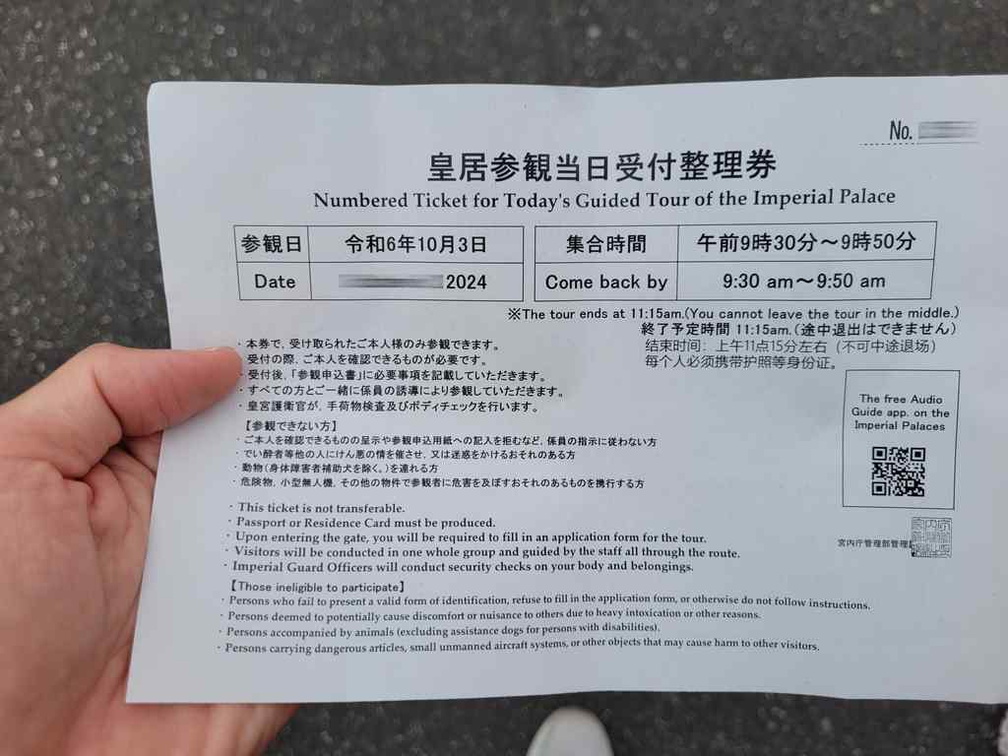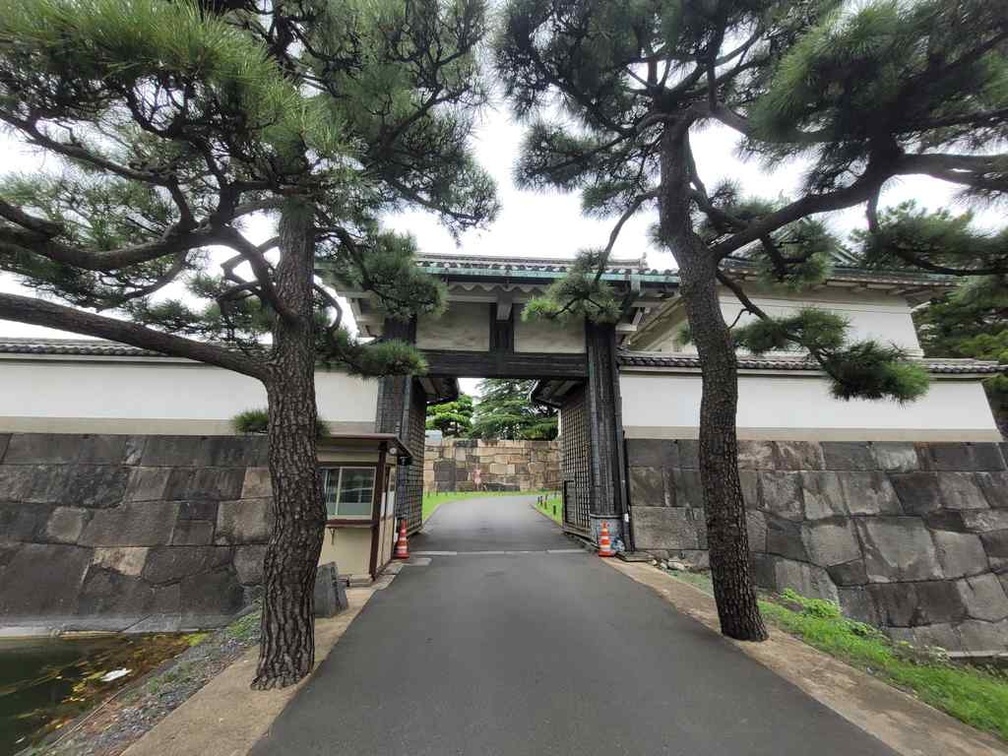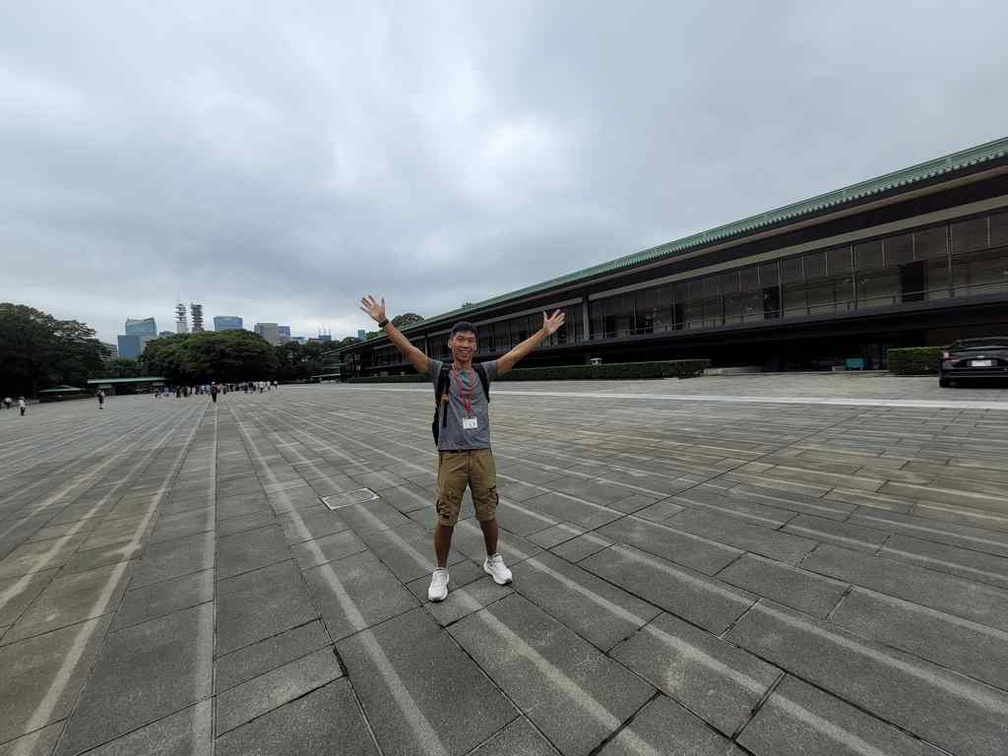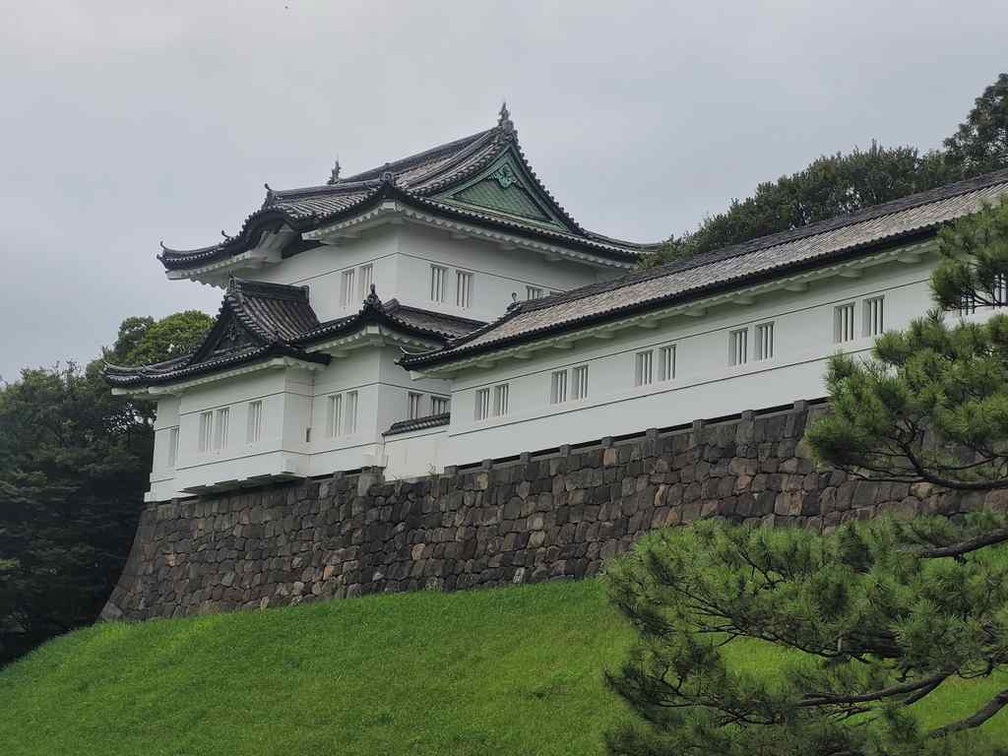Let’s take a visit and explore of the Tokyo Imperial Palace, located in the heart of Japan’s capital. The establishment stands as a historic and cultural symbol of the country. Take a walk through the grounds of the residence of Japan’s imperial family, beautiful gardens and housing for foreign dignities. I shall also cover how does it take to register to visit the palace ground as a walk-in visitor, where entry is by registration only.

On some history, once the site of Edo Castle, it became the residence of Japan’s imperial family in 1868 after the Meiji Restoration. This is moving from the previous Japanese capital in Kyoto. Although the palace remains closed to the public, its vast gardens and outer areas provide visitors with a glimpse into Japan’s rich history and architectural elegance. The palace tad blend of traditional and modern elements reflecting Tokyo’s ability to preserve its past while embracing the future.

Tip on securing a visitation spot
The Tokyo Imperial Palace does two tours daily, one on 10am and other at 1:30pm. On tour days, the palace tour in a nutshell brings you within the imperial palace interior compound. This namely includes the public, guest and garden areas. The main palace itself is not accessible publicly and entry to the palace is strictly by pre-registration, with limited slots each day. All tours within are conducted with a guide, this means you cannot explore the grounds yourself or at your own time.
Also, the palace does pre-registrations on their website and walk-ins on tour dates. But I recommend forgoing the website registration as they are always full and oversubscribed usually by large tour groups. Instead, I recommend doing an in-person walk-in at any of the two tour time slots daily, where they are able to take in 300 walk-in guests at each timeslot.
Walk-in to Kikyo-mon gate 45 mins beforehand
To get a spot, all you have to do is to turn up at the palace’s Kikyo-mon gate on the day of your visit about 30-45 mins before the tour start time. The gate is a 10 min walk from Tokyo central station. Do note that there are no tours on Sundays, Mondays and on special holidays. Do check their website for closure dates when planning your visit.
Furthermore, the tour itself is about an hour-and-half long, running from 10am to 11:15am for the morning tour, and the afternoon tour running from 1:30pm- 2:45 pm. Also, registrations for the morning tour starts at 9am to 9:30am and 12:30 to 1pm respectively for the PM tour.

Remember to bring your Passport ID
On my visit, arriving about 9:15am (45 min early) for the 10am tour got me position 199 of 300 for the slots for that day. There, a staff will give you a leaflet ticket with a number to fill in some personal details, so do have a pen handy with you. Thereafter, you need to show some ID like your passport as a tourist, where staff will issue you a numbered red lanyard tag.

Moreover, I noticed the 10am tour still was accepting registrations till about 9:30am on a first-come basis. The palace staff started turning people away from 9:40am onwards. Hence, I would recommend arriving about 30 mins before the closing, and I advise you not to play it too close and come earlier to secure a slot.
Also, there is no need to stay in queue once you secured a numbered leaflet and name tag. After securing your numbered slot, you can take your time to explore the outer palace. You can check out building elements like the Sakurada Tatsumi Yagura watch tower on the outside moat, or use the public toilets before joining the tail-end of the queue in.

Pre-tour holding, briefing and split into your groups
A long line forms typically back at the Kikyo-mon gate to enter about half an hour before tour start time. You enter in batches by 9:45am. Thereafter everyone be all brought into a free-seating holding hall inside the palace ground. Prior, you be whisked through quick bag check into this vast lit hall.

Here various palace staff conduct tour briefings in various languages, followed by a safety-briefing only in Japanese. You can pick up a guide brochure in your language. The hall has a palace gift shop and toilets if needed.

After the briefings, you have about 5 minutes to make your way out of the hall and join into different your groups of your choosing by tour language. Each tour group is led by a guide of the Imperial Household Agency, who you can identify in their smart dark uniforms and hat. There are a couple of tours conducted in English, Spanish and Mandarin, with English being the more popular ones being one of them. And you tour begins!

A guided walk through the Imperial grounds
Furthermore, the tour route goes about in a linear fashion starting past a couple of administrative building and past the Fushimi-yagura at the top of a hill. It is done entirely on foot so do wear comfortable walking shoes. Along the route, the Fushimi-yagura here is one of the many historic watchtowers located within the grounds of the Tokyo Imperial Palace grounds.
Moreover, it was originally constructed during the Edo period. This three-story structure served both as a defensive fortification and a symbol of the shogunate’s power. The yagura was relocated to its current location from Fushimi Castle in Kyoto. It remains one of the few surviving remnants of the original Edo Castle.

Also, the building spots a distinctive architectural style and strategic position, the Fushimi-yagura offers a glimpse into Japan’s feudal past while standing as a testament to traditional Japanese craftsmanship.

Furthermore, the Edo Castle within here which once stood in place of the Imperial Palace. It served as the residence of the Tokugawa shoguns for over 260 years. Following the Meiji Restoration, the Emperor moved from Kyoto to Tokyo, establishing the palace as the center of Japan’s political power.
Also, the original palace was destroyed during World War II. Thereafter, it was reconstructed in the post-war years to maintain its historical significance. The blend of traditional Japanese design and modern restoration techniques is evident throughout the structure.

On your walk, you pass by several support and Administrative buildings in various architecture styles on the way. Examples include the Imperial Household Agency building which houses local government office. Also here, you can catch a glimpse on the exterior of the imperial palace and gardens as you walk past it. Take a peek at the gardens and the boundaries of the actual Imperial Palace, which is out of bounds to the public as it is still actively used by the Imperial Family today.
Lush gardens
Moreover, one of the highlights of the visit is the East Gardens, you momentary walk though this public area that offers a peaceful retreat from the city. These gardens are meticulously maintained, featuring a mix of seasonal flowers, traditional Japanese landscaping, and historic remains from the Edo Castle.

Walking through the gardens, one can observe some stone foundations and rebuilt buildings, serving as a reminder of Tokyo’s transformation over the centuries. The contrast between the lush greenery and the remnants of the past creates a serene environment for reflection.

Besides day-to-day upkeep of the palace grounds by local volunteers, and staff of the Imperial Household Agency. You can see that accommodation for tours is a major part of the palace daily schedule. It is a major logical and manpower feat too that there is even have a dedicated hut to house each 300+ visitor crowds for each tour timeslot.
Chowaden, Reception Hall
Next is the Chowaden, the Reception Hall of Imperial Palace. It is the largest building within the palace grounds, serving as the venue for major state functions and public events.

The building itself sits in front of a vast giant parade square used for ceremonies. It has also modern architectural design blends traditional Japanese elements. Also, the hall is a symbol of both Japan’s imperial heritage and its forward-looking vision.

It plays a key role in ceremonies such as the Emperor’s New Year greetings and birthday celebrations, where the imperial family makes public appearances on the hall’s balcony to greet well-wishers.
You can take a peek into the reception hall gardens and also note the green turtle hump trees. These are sculpted pine trees using a technique called karikomi, where trees and shrubs to create low, rounded, and harmonious forms. The shape is inspired by turtles, symbolic in Japanese culture for their representation of longevity and resilience.
Crossing the Nishinomaru bridge

From Chowaden Reception Hall, you pass through the Nishinomaru gate towards the Nijubashi iron bridge, where the tour wraps up with a U-turn back. But this spot is not without some great views of another Watch tower and the palace moat.

Here, the Nijubashi bridge is a significant landmark of the palace. It crosses over the palace moat that encircles the palace creates a natural barrier, adding to its sense of seclusion and tranquillity.

Even though entry to the inner grounds is restricted, the palace exudes a grandeur that is hard to ignore. Also, from the Nijubashi bridge, you can see another Fushimi-yagura (watch tower) as well as the Nijubashi moat leading out into the outer moat and the outer public areas of the imperial palace.

The view of the Tokyo modern buildings offers the stark contrast of the development surrounding the Imperial Palace over the centuries.
One to shortlist to visit in Tokyo
All in all, the Tokyo Imperial Palace is a destination for those interested in Japan’s history. Though I won’t rank it up there on a must-do when you are Tokyo, but rather one to shortlist to do in Tokyo or one to cover as a bucket-list item.

Also, you won’t be missing out much if you forgo this either. Though the palace grounds has peaceful atmosphere despite the bustling city surrounding it, the palace itself is not as spectacular as other Japanese shrines and temples such as the ones you be spoilt for beauty in Kyoto for instance.

Still, the Tokyo Imperial Palace is a site of historical significance as the current residence of the imperial family. This, combined with the remnants of Edo Castle, creates an experience that blends the old with the new. The well-maintained gardens and public areas provides moments of tranquillity in one of the busiest cities in the world. It remains a powerful symbol of Japan’s enduring traditions, making it a valuable stop for anyone exploring Tokyo city.


















